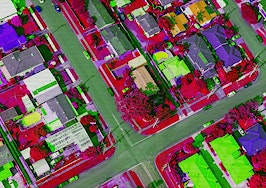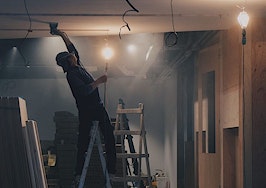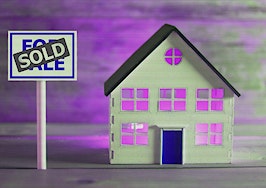As the coronavirus pandemic continues to spread around the world, industries are being affected in unprecedented ways. Within the past few months, entire countries were locked down, businesses were shuttered and work was put on hold. Even now, people are still learning to adapt to a new way of living.
As we grapple with the virus here at home, we’re witnessing just how much it has impacted — and continues to impact — our economy. To get a pulse on the state of the housing market, and the U.S. economy as a whole, economists often turn to new residential construction data for indicators on where the market may be heading.
By closely monitoring this data, we can extract key insights to better understand the effects of COVID-19 on our industry, catch a glimpse of the future, and prepare ourselves and our clients for what’s to come.
A rapidly evolving new construction landscape
At the start of 2020, the housing market was shaping up to have a strong first quarter. In January and February, privately owned housing starts were 21.4 percent higher and 39.2 percent higher than in 2019, respectively.
But as the coronavirus spread and construction was halted across the country, March saw a 22 percent drop in privately owned housing starts compared to the month prior. April set another bleak milestone as housing starts further plunged, down 30.2 percent from March — the lowest month-over-month drop since 2015.
New residential sales have also suffered, with sales of newly built single-family homes falling 15.4 percent in March. Data from January and February again indicated signs of a strengthening housing market coming out of 2019.
January saw an 18.6 percent increase in new home sales compared to the same month the year prior, with February sales climbing 14.3 percent higher. In April, new homes sales ticked slightly upward with a 0.6 percent increase but were still 6.2 percent below new homes sales the year prior.
As the current new construction landscape continues to be affected by the COVID-19 pandemic, homebuilders have been forced to adapt as they face new obstacles.
Homebuilders face new challenges amid COVID-19 outbreak
Over the past several weeks, the coronavirus outbreak has posed a new set of challenges for homebuilders. Tighter credit conditions, limited building materials, mounting layoffs and new job site restrictions have all had an impact on the industry as builders work to adjust to a new normal.
1. Builder loan access tightens
According to the National Association of Home Builder’s AD&C financing survey for the first quarter of 2020, builders and developers have reported an overall tightening of credit on loans for land acquisition, development and single-family construction.
NAHB’s net tightening index increased 40 points since the last quarter of 2019 from -22.3 to 22.7. The positive number indicates a tightening of credit, with a larger positive number indicating widespread credit tightening.
For single-family construction, 26 percent reported worsening credit conditions as compared to the fourth quarter of 2019, with 57 percent of builders citing lender concerns over the coronavirus as the reason credit conditions have worsened.
2. Supply chain constraints
The construction industry is increasingly feeling the effects of lockdowns that hit many countries across the globe. With many residential building materials sourced from outside the U.S., supply chains are taking a hit.
At the beginning of April, 17 percent of builders reported an adverse effect on the supply of building products and materials to a major extent and 55 percent to a minor extent. The limited availability of building materials has led to shipping delays, with marble, tile, paving stones and light fixtures all experiencing setbacks and an increase in the need for builders to source materials domestically.
3. Construction layoffs slow pace
The sudden halt of the U.S. economy led to an unforeseen spike in residential construction layoffs this past month. As recently as February, residential construction employment had seen an increase of 24,100 jobs, but things started to take a turn in March when employment decreased by 4,300.
April saw an astounding drop in residential construction employment, decreasing by 415,000. The decrease in employment is expected to continue, before eventually turning around later this year, further slowing the pace of new construction.
4. Social distancing on job sites
Although deemed an essential service in the majority of states at the onset of stay-at-home orders, construction job sites still must adhere to strict guidelines around social distancing and safety procedures.
Some states are limiting the number of workers allowed on a job site at one time, requiring masks to be worn and preventing different trades from overlapping on construction sites. These new requirements on job sites have further complicated things for the construction industry.
What does this mean for new-build homebuyers?
As homebuilders deal with new obstacles inflicted by COVID-19, current and prospective buyers of new construction homes may be wondering how these challenges could affect their home purchase. Although the market is constantly reacting to changing guidelines, new-build homebuyers should expect a few changes:
1. Delayed timelines
With building material constraints, job site limitations due to social distancing, and delayed responses from local building departments for inspections, many new residential completions are experiencing delays.
According to a recent NAHB survey, 48 percent of builders are halting construction for some or all of their projects. Homebuyers who expected their home to be completed on time should be aware that there may be potential delays in their home completion.
2. Possible reduction in new home prices
According to the most recent NAHB Housing Market Index (HMI) survey, 22 percent of builders nationwide cut new construction home prices in April in an attempt to boost sales and prevent cancellations.
Builders in the South and Midwest were most likely to reduce prices, 26 percent and 23 percent respectively, whereas only 13 percent of builders cut prices in the West and only 12 percent in the Northeast.
Of the builders that did reduce home prices, the average reduction in price was 5 percent. With this data, homebuyers hoping to purchase a new-build home may have an opportunity to get a slightly better deal.
3. Lower inventory
Delays and slowdowns to new construction homes will likely contribute to an overall lack of housing inventory, further exacerbating a critical housing shortage that has already been an ongoing issue for many areas of the country.
If demand holds strong, this low supply may end up leading to an overall increase in home values as buyers compete for a limited supply of homes, both new and existing.
4. Going virtual
As the country continues to slow the spread of COVID-19, builders are having to adapt to keep homes selling. Social media, virtual tours and online closings are all tools being embraced by home builders.
According to a recent NAHB survey, 59 percent of builders are currently offering or planning to offer private showings of model homes. Builders are also turning toward alternative ways to close home sales, with 46 percent offering online or other closings and 43 percent offering drive-through closings.
Where do we go from here?
As states begin to ease stay-at-home orders and slowly loosen restrictions, positive trends have begun to emerge. After dropping 72 points to a historically low level in April, builder confidence jumped 21 points this month up to 58 — showing signs of an emerging optimism from the builder community.
The most recent data released from May also shows positive upward trends with a 4.3 percent increase in privately owned housing starts and a 16.6 percent rise in new home sales, as compared to the month prior.
And while home purchases may be delayed, a recent increase in mortgage applications and higher buyer foot traffic, has signaled that the demand is still there. As key market indicators hint at a future rebound, the industry remains optimistic that the housing market will lead the way for an eventual economic recovery.
Lindsey Hood is the content marketing manager at Jovio in Austin, Texas. Connect with her on LinkedIn.













